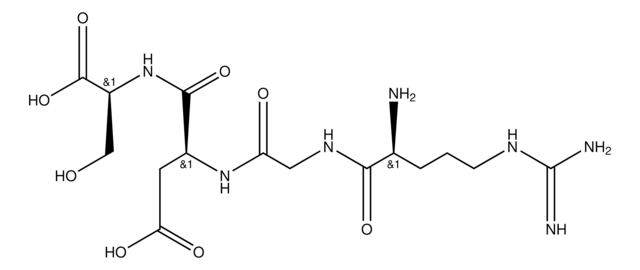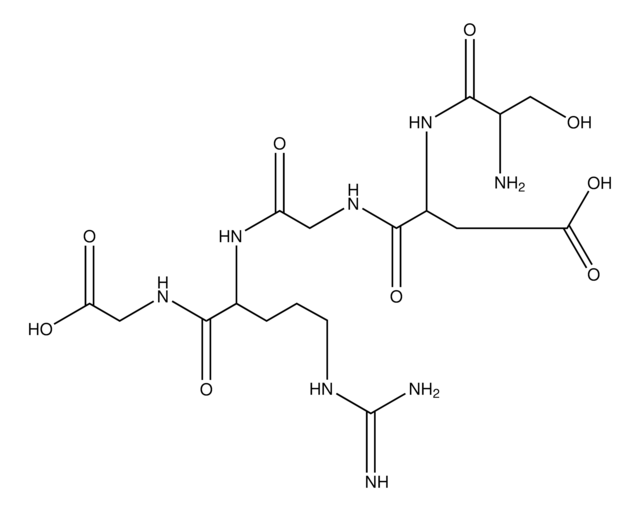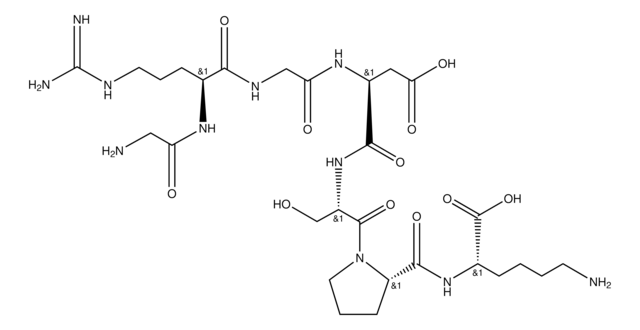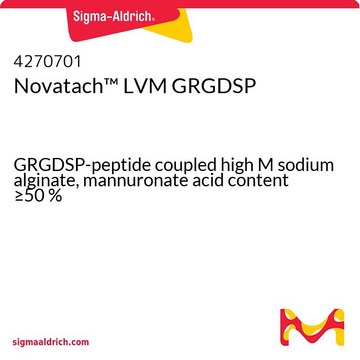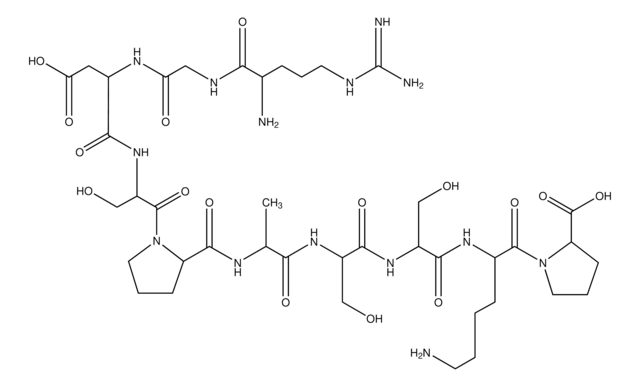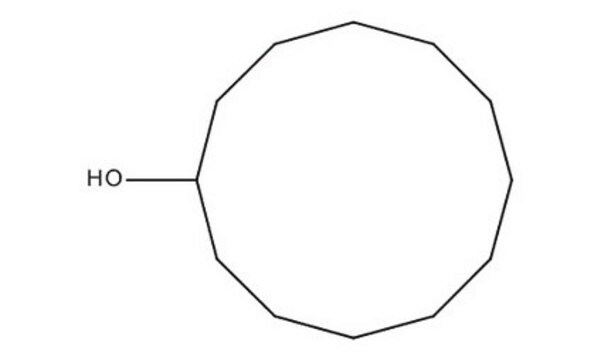Key Documents
About This Item
Polecane produkty
Poziom jakości
Próba
≥97% (HPLC)
Postać
powder
skład
Peptide content, ≥60%
metody
blocking: suitable
cell culture | mammalian: suitable
temp. przechowywania
−20°C
ciąg SMILES
NCC(=O)N[C@@H](CCCNC(N)=N)C(=O)NCC(=O)N[C@@H](CC(O)=O)C(=O)N[C@@H](CO)C(O)=O
InChI
1S/C17H30N8O9/c18-5-11(27)23-8(2-1-3-21-17(19)20)14(31)22-6-12(28)24-9(4-13(29)30)15(32)25-10(7-26)16(33)34/h8-10,26H,1-7,18H2,(H,22,31)(H,23,27)(H,24,28)(H,25,32)(H,29,30)(H,33,34)(H4,19,20,21)/t8-,9-,10-/m0/s1
Klucz InChI
RGNVSYKVCGAEHK-GUBZILKMSA-N
informacje o genach
human ... ITGB3(3690)
Szukasz podobnych produktów? Odwiedź Przewodnik dotyczący porównywania produktów
Amino Acid Sequence
Opis ogólny
Zastosowanie
- as an antigen to determine whether integrin α4 or α5 hinders the adhesion of day 3 postirradiation thymocytes to thymic epithelial cells, in mice
- for the treatment of collagen IV-coated dishes to study the role of integrins α1, αv, β1, and β3 in Sca-1+ progenitor cell differentiation into SMCs (smooth muscle cells)
- as a blocking peptide for the pre-incubation of Nisseria meningitides strains, to perform blocking experiments to study the interactions between these bacterial strains and fibronectin
- for the pre-treatment of EL-4 cells infected by AdCMV-GFP (cytomegalovirus-green fluorescent protein), to study whether interaction with cellular integrins is essential for the transduction of adenovirus
Działania biochem./fizjol.
Kod klasy składowania
11 - Combustible Solids
Klasa zagrożenia wodnego (WGK)
WGK 3
Temperatura zapłonu (°F)
Not applicable
Temperatura zapłonu (°C)
Not applicable
Środki ochrony indywidualnej
Eyeshields, Gloves, type N95 (US)
Certyfikaty analizy (CoA)
Poszukaj Certyfikaty analizy (CoA), wpisując numer partii/serii produktów. Numery serii i partii można znaleźć na etykiecie produktu po słowach „seria” lub „partia”.
Masz już ten produkt?
Dokumenty związane z niedawno zakupionymi produktami zostały zamieszczone w Bibliotece dokumentów.
Klienci oglądali również te produkty
Nasz zespół naukowców ma doświadczenie we wszystkich obszarach badań, w tym w naukach przyrodniczych, materiałoznawstwie, syntezie chemicznej, chromatografii, analityce i wielu innych dziedzinach.
Skontaktuj się z zespołem ds. pomocy technicznej
